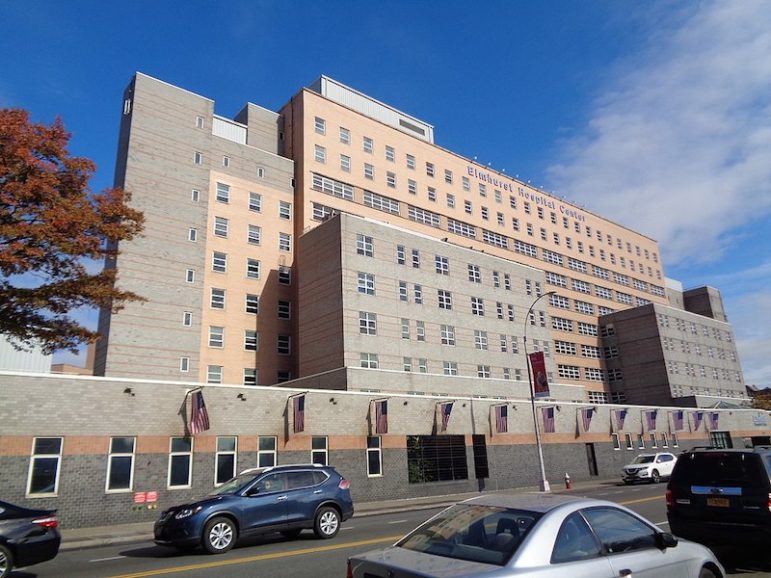
Months after coronavirus-related deaths peaked, we now know that New York City suffered a tale of two pandemics. Perhaps the most heartbreaking example of this is the disparate health outcomes of wealthy versus low-income New Yorkers. Those in affluent neighborhoods benefited from well-funded local hospitals, while those in lower-income areas had to rely on woefully under-funded “safety net” hospitals.
As the New York Times detailed in a recent investigative report, some of these community hospitals experienced COVID-19 patient mortality rates three-times higher than wealthier hospitals in Manhattan. The report also cited workers at outer-borough hospitals that serve mostly patients without private insurance, who revealed sky-high nurse-to-patient ratios of 20 to one.
Fully two-thirds of New Yorkers who have died so far from COVID-19 lived in zip codes where the median household income was below the city’s median. In other words, where you live during the pandemic has literally meant the difference between life or death. Living in these areas doesn’t only make you more susceptible to contracting the virus, it also makes you more likely to die from the virus, for myriad reasons.
This is not a new problem. It is a great historical failure of New York’s government that health and life expectancy are wedded to your zip code, as well as your race. Black New Yorkers live four years shorter on average than White New Yorkers.
Yet, even after this unforgivable inequality has been brutally laid bare, there are no real plans for a fix. In fact, with state Medicaid and federal healthcare cuts looming, this crisis is about to worsen.
That cannot happen. The most basic function of government is to keep its people safe. And so there are reforms to our health system that must be made immediately.
First of all, the city and state must formalize a truly coordinated effort to evenly distribute the responsibility of treating coronavirus patients across hospitals. In March, there were bold promises from the governor and mayor that they would take a networked approach to handling patients. But that is not what happened. It seems instead that patients were largely treated where they live, whether their hospital was overwhelmed or not.
Some of the problem was bureaucratic. Healthcare understandably has layers of regulations, preventing staff and patients from easily moving between hospitals. Part of it was logistical. Besides lack of coordination between local and state government, hospitals are simply not used to sharing data and systems.
But now that we know the problems, there is no reason not to fix them. Without creating a unified citywide health network with special powers during a state of emergency, we are just setting ourselves up for failure when the next crisis arrives, whether it be the next wave of COVID-19 or a new public health challenge.
That coordinated approach can greatly reduce inequality in healthcare overall. When the system is set up to equitably distribute poorer, uninsured patients, outcomes will improve. Each hospital must handle their fair share.
We also can no longer ignore the dire financial straits of safety net hospitals. In good times, most are on fiscal life support. But many now teeter on the brink of insolvency due to the pandemic. If those hospitals close, other safety net hospitals will become even more overwhelmed and financially insecure, tipping dominoes that could bring down the entire system.
Saving our safety net hospitals will take a mix of support from public and private sources. First, the state must increase revenue from surcharges on private insurance plans generated by its 20-year-old Health Care Responsibility Act to boost funding for struggling hospitals.
 CityViews are readers’ opinions, not those of City Limits. Add your voice today!
CityViews are readers’ opinions, not those of City Limits. Add your voice today!
The state can do this by adjusting the surcharges so that they are fairer, both regionally and economically. The “covered lives” surcharge for New York City plans is more than 10 times that of Utica plans, for instance. And the surcharges should only go up for those who can afford it.
Wealthier hospitals should also help. They are able to negotiate more financially beneficial rates with commercial insurers than poorer hospitals because they treat far more of their customers, creating significant cost savings and revenue. The five major Manhattan hospital systems should partner with poorer hospitals to share those savings in a pool, using their buying power to lower costs for outer-borough safety net hospitals.
Of course, the best-case scenario is that the federal government provides far more funding for our patients and our hospitals. But experience has shown we can’t rely on the Trump administration to bail us out. New York has largely been on its own fighting this crisis, and that is likely to continue.
When COVID-19 hit with full force in March, our hospitals did not have adequate time to prepare. If a second wave comes, we will not have that same excuse. Now is the time to set up the structures that will protect New Yorkers and simultaneously reduce the inequalities in our healthcare system that were already killing thousands of New Yorkers a year.
Eric L. Adams is the Brooklyn Borough President.









One thought on “Opinion: COVID-19 Exposed Health Disparities that New York Can—and Must—Fix”
Just as soon as those income & property taxes start coming in and not before.